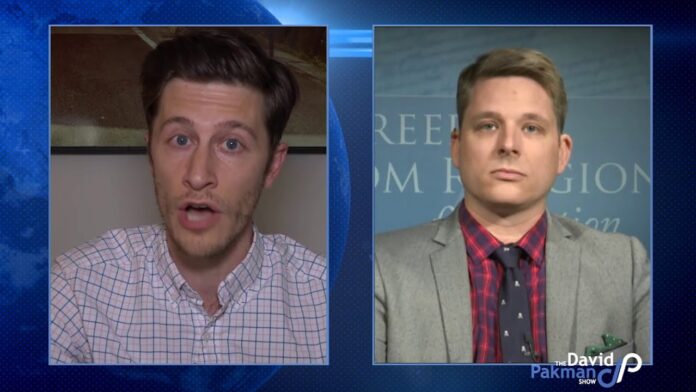The relationship between religion and government has been a source of tension and debate since the dawn of civilization. From theocracies to secular states, the dynamic between faith and power has been fraught with challenges, leading to a complex tapestry of laws, policies, and societal norms. In the United States, this complex interplay is particularly evident in the seemingly contradictory principles of the separation of church and state, enshrined in the First Amendment, and the protection of religious rights, also guaranteed by the same amendment. This essay will delve into the historical context, legal framework, and contemporary challenges surrounding these principles, examining how they are interwoven and how they continue to be debated in the 21st century.
Introduction
The concept of separating religious institutions from political power can be traced back to ancient Greece and Rome, where the emergence of secular philosophy and legal systems gradually distanced religious authority from state affairs. However, the modern understanding of separation of church and state finds its roots in the Enlightenment, a period marked by the rise of scientific rationalism and individual liberty. During this era, thinkers like John Locke argued for the individual’s right to freedom of conscience and the importance of limiting the power of the state in matters of faith. These ideas were later enshrined in the U.S. Constitution, specifically in the First Amendment which states, “Congress shall make no law respecting an establishment of religion, or prohibiting the free exercise thereof.”
History of Religious Freedom

The history of religious freedom in the United States is deeply intertwined with the country’s founding and its struggle for independence from British rule. The first European settlers in America came seeking religious freedom, as many were fleeing persecution in their own countries. The Puritans in New England, the Quakers in Pennsylvania, and the Catholics in Maryland were all seeking a safe haven where they could practice their faith without fear of retribution. However, this did not necessarily extend to other religious groups, as many colonies had established their own official religion and persecuted those who did not adhere to it.
The concept of religious freedom truly began to take shape during the American Revolution, when colonists were fighting for their independence and seeking to break away from the British Crown’s control over their religious practices. The Virginia Statute for Religious Freedom, written by Thomas Jefferson in 1777 and passed in 1786, was a landmark document that declared that “all men shall be free to profess, and by argument to maintain, their opinion in matters of religion, and that the same shall in no wise diminish, enlarge, or affect their civil capacities.”
This idea of religious freedom was also central in the drafting of the U.S. Constitution, with the First Amendment providing a crucial safeguard against government interference in matters of faith. This amendment not only ensured that the government could not establish an official religion, but also protected the rights of individuals to freely exercise their chosen religion.
Current Debates and Controversies

Despite the clear protections outlined in the First Amendment, debates and controversies surrounding religious freedom have continued to arise throughout the country’s history. One of the most significant issues has been the interpretation and application of the separation of church and state principle. While some argue that this means a complete separation between religion and government, others believe that there should be some cooperation and collaboration between the two.
One area of contention is the role of religion in public schools. The Supreme Court has ruled that prayer and Bible readings cannot be mandated in public schools, as it would violate the establishment clause of the First Amendment. However, there have been ongoing debates about the teaching of creationism or intelligent design in science classrooms, with some arguing that it is a violation of the separation of church and state while others believe it is a valid alternative to evolutionary theory.
Another hotly debated issue is the display of religious symbols on government property. While some argue that these symbols represent the country’s religious heritage, others see them as a violation of the establishment clause. The Supreme Court has ruled on numerous cases related to this issue, with decisions often depending on the context and purpose of the display.
Different Perspectives on Religious Freedom
The debates and controversies surrounding religious freedom are not limited to the separation of church and state but also extend to other aspects of religious rights. There are differing perspectives on how religious freedom should be defined and protected, with various groups advocating for their own interests.
On one hand, there are those who believe in strict separation between religion and government, arguing that any involvement or support of religion by the state is a violation of the First Amendment. These individuals typically prioritize individual rights and freedoms over religious institutions’ beliefs and practices.
On the other hand, there are those who see religious freedom as a broad concept that includes not only freedom of worship but also the ability to openly express one’s faith and live according to its principles. This perspective often takes into account the role of religion in shaping societal values and traditions and argues that government should not restrict religious expression.
There are also those who view religious rights as a means to discriminate against others, particularly in the areas of employment and healthcare. This has been a contentious issue in recent years, particularly with the rise of religious exemptions and conscience clauses, which allow individuals and organizations to deny services based on their religious beliefs.
Impact of Religious Freedom on Society
Religious freedom has a significant impact on society, influencing laws, policies, and cultural norms. In many ways, it reflects the country’s values and priorities, as well as the evolving relationship between religion and government. One of the biggest challenges facing society today is finding a balance between protecting religious freedom and upholding other fundamental rights, such as equality and non-discrimination.
Religious freedom can also have an impact on public health and safety. For example, there have been cases where parents have refused medical treatment for their children due to religious beliefs, leading to tragic consequences. In these situations, the rights of the child clash with the religious rights of the parent, raising questions about where the line should be drawn in terms of protecting individual rights.
Furthermore, religious freedom can also intersect with other social issues such as gender equality and LGBTQ+ rights. Many religions have strict beliefs about gender roles and sexual orientation, and there have been cases where individuals have used their religious beliefs to discriminate against others. This has led to a balancing act between upholding religious freedoms and ensuring that basic human rights are not violated.
Conclusion
The separation of church and state and the protection of religious rights have been intertwined since the founding of the United States. While these principles are meant to coexist, debates and controversies continue to arise, highlighting the complexities of balancing individual freedoms with governmental authority. As society continues to evolve and new challenges emerge, it is crucial to revisit and examine these principles, ensuring that they uphold the values of a free and democratic society. Ultimately, finding a balance between these seemingly contradictory principles will require ongoing discussions and efforts to protect both religious freedom and other fundamental rights for all members of society.









